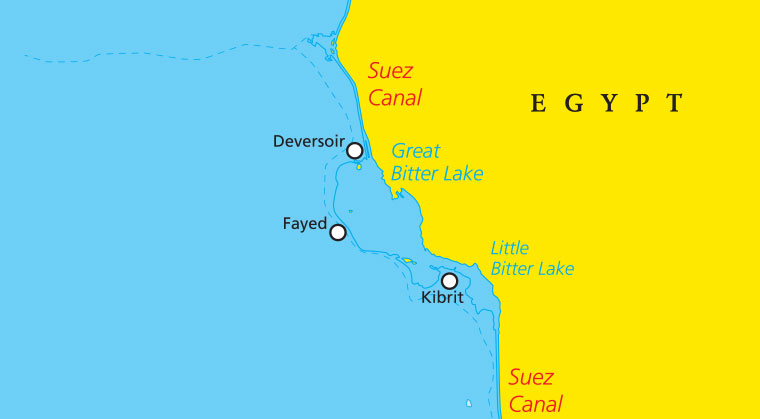The Saga of the Suez Canal


Suez Canal Facts
The Suez Canal is a man-made waterway that connects the Mediterranean Sea to the Red Sea. It also connects Europe to the African continent and then to Asia. That makes it the shortest sea route between Europe and all the countries across the Indian and western Pacific oceans. Because of this, the Suez Canal is one of the world’s busiest shipping routes.
The Suez Canal runs for 120 miles between Port Said in the north, and Suez in the south. Because the Red Sea and the Mediterranean Sea are at the same level, the Suez Canal doesn’t have any locks, so the seawater flows freely through it.
Roots of the Suez Canal
The Suez Canal wasn’t the first canal to be built in Egypt. During the rule of the Pharaohs, a canal was built that linked the Nile to the Red Sea. It was called the Ancient Suez Canal or the Canal of the Pharaohs. The Romans extended the canal, but later, Muslim rulers had it filled in to prevent enemies from using the canal to invade Egypt.
In the 15th century, Venetians planned to build a canal there in order to sail directly from the Mediterranean to the Indian Ocean. That way, they could also trade with East India, just like the Portuguese, Dutch, and English. But their plans came to nothing.
When Napoleon occupied Egypt in the late 18th century, he also wanted to build a canal there. But the engineer he appointed to survey the land made a big mistake. He calculated that the Red Sea was ten meters higher than the Mediterranean, which meant that cutting a canal to join the two would cause terrible flooding across the Nile plains. He was wrong (they’re actually roughly the same level), but Napoleon believed him, and so the plan was abandoned.
Why, Who, What?
So why was everyone so interested in building a canal there?
Before the Suez Canal was built, there were two ways to get from ((&where&)) to ((&where&)). You could travel by sea all the way around Africa, or unload the ship at the Red Sea port, carry it over land to the Mediterranean and reload them onto another ship there. A canal between the Red Sea and the Mediterranean would make a land route totally unnecessary, and would cut 2,700 miles off the sea route.
In the end, it was a Frenchman by the name of Ferdinand de Lesseps who got permission from the Egyptian Pasha to build the canal in 1854. The Suez Canal Company was formed as a joint French/Egyptian company and the work was paid for by both governments.
In 1888, all the world’s major powers (except Great Britain) signed the Convention of Constantinople, which declared that the canal should be open to ships of all nations in both peace and wartime. The Convention also forbade acts of war in the canal. During the Spanish-American War, Spanish warships were not allowed to enter the canal. The same thing happened to a squadron of the Russian navy during the Russo-Japanese War and Italian vessels on their way to invade Ethiopia. Today, the canal is fully owned and controlled by Egypt.
(Excerpted from Mishpacha Jr., Issue 745)
Oops! We could not locate your form.







